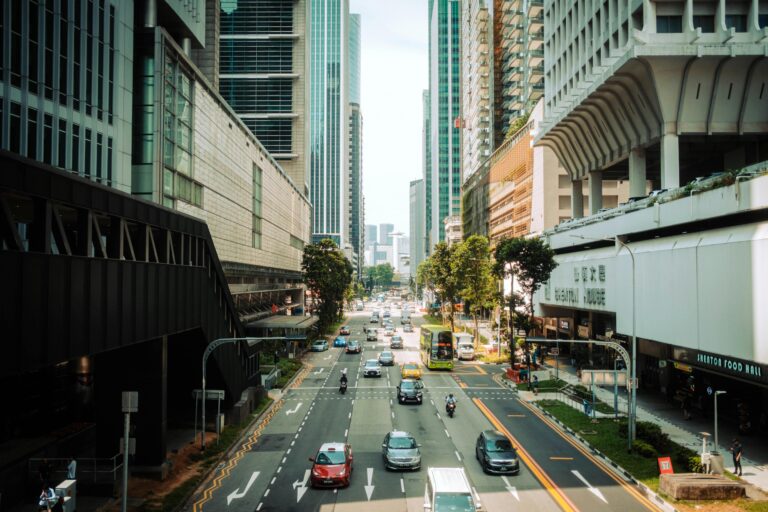
In recent years, Singapore has witnessed a concerning trend: a steady increase in the number of road accidents across the island nation. This surge in accidents has raised alarms among authorities and the public alike, prompting calls for urgent action to address the underlying causes and improve road safety measures.
Learn more safety driving tips here: https://learntodrivesg.com/
The Growing Concern
According to statistics released by the Singapore Traffic Police, the number of reported road accidents has been on the rise, with an average increase of 5% annually over the past five years. In 2023 alone, Singapore recorded over 10,000 road accidents, resulting in numerous injuries and fatalities. While Singapore boasts one of the lowest road fatality rates globally, the escalating number of accidents remains a cause for concern.
Contributing Factors
Several factors contribute to the rising number of road accidents in Singapore:
- Distracted Driving: The proliferation of smartphones and other electronic devices has led to an increase in distracted driving incidents. Drivers often engage in activities such as texting, browsing social media, or making phone calls while behind the wheel, diverting their attention from the road and increasing the risk of accidents.
- Speeding and Reckless Driving: Despite stringent speed limits and traffic regulations, speeding and reckless driving continue to be prevalent on Singapore’s roads. Some drivers flout traffic rules, weaving in and out of lanes or exceeding speed limits, endangering themselves and others.
- Driver Fatigue: Long working hours and hectic lifestyles contribute to driver fatigue, impairing judgment and reaction times. Fatigued drivers are more prone to making errors and falling asleep at the wheel, leading to accidents, especially during late-night or early-morning hours.
- Infrastructure Challenges: Singapore’s densely populated urban environment and intricate road network pose challenges for drivers, including congestion, complex intersections, and narrow lanes. These factors increase the likelihood of accidents, especially during peak traffic hours.
Solutions and Initiatives
Addressing the rising number of road accidents requires a multi-faceted approach involving various stakeholders, including government agencies, law enforcement, road users, and the community. Some key solutions and initiatives include:
- Public Awareness Campaigns: Launching comprehensive public awareness campaigns to educate drivers about the dangers of distracted driving, speeding, and other risky behaviours. These campaigns can leverage various platforms, including social media, to reach a wide audience.
- Enhanced Enforcement: Strengthening enforcement measures to deter traffic violations and promote compliance with traffic laws. This includes deploying more traffic police officers, increasing the use of surveillance cameras, and implementing stricter penalties for offenders.
- Investment in Infrastructure: Continuously upgrading and enhancing Singapore’s road infrastructure to improve safety and reduce congestion. This may involve widening roads, installing better signage and lighting, and implementing traffic calming measures in accident-prone areas.
- Driver Education and Training: Providing comprehensive driver education and training programs to equip motorists with the knowledge and skills needed to navigate Singapore’s roads safely. This includes promoting defensive driving techniques, emphasizing the importance of adhering to traffic rules, and raising awareness about the consequences of reckless driving.
- Technological Solutions: Embracing technological advancements to enhance road safety, such as implementing intelligent traffic management systems, developing autonomous vehicle technologies, and introducing smart road infrastructure.
Defensive Driving
Defensive driving is a proactive approach to driving that focuses on anticipating and avoiding potential hazards on the road. It involves being constantly aware of one’s surroundings, maintaining a safe distance from other vehicles, and adapting to changing road conditions to minimize the risk of accidents. While defensive driving cannot prevent all accidents, it significantly reduces the likelihood of collisions and helps drivers respond effectively to unexpected situations.
Key Principles of Defensive Driving
- Stay Alert: Pay close attention to the road and surrounding traffic at all times. Minimize distractions like texting, phone conversations, or eating while driving. Maintain focus on the road ahead and be ready to respond swiftly to unexpected traffic changes.
- Maintain Safe Following Distance: Keep a safe distance from the vehicle in front of you to allow ample time to react in case of sudden stops or emergencies. The recommended following distance is at least three seconds under normal driving conditions and more in adverse weather or heavy traffic.
- Anticipate Hazards: Scan the road ahead for potential hazards, such as erratic drivers, pedestrians, cyclists, or road obstructions. Anticipate potential dangers and be prepared to take evasive action if necessary.
- Be Predictable: Signal your intentions early when changing lanes, merging, or turning. Make sure other drivers can anticipate your movements, reducing the risk of misunderstandings and collisions.
- Follow Traffic Laws: Respect speed limits, traffic signals, and road signs. Abide by all traffic rules and regulations, including giving way to others when required and stopping for pedestrians at crosswalks. Show Patience and Courtesy: Display patience and courtesy towards fellow road users, especially in challenging circumstances. Refrain from engaging in aggressive driving behaviors like tailgating, excessive honking, or displaying rude gestures.
- Be Patient and Courteous: Practice patience and courtesy towards other road users, even in stressful situations. Steer clear of aggressive driving actions like following too closely behind other vehicles, honking excessively, or making disrespectful gestures.
Practical Tips for Defensive Driving
- Scan Your Mirrors: Regularly check your rearview and side mirrors to monitor surrounding traffic and blind spots. Be aware of vehicles approaching from behind and on either side of your vehicle.
- Use Your Turn Signals: Signal your intentions early when changing lanes, merging, or exiting the roadway. This alerts other drivers to your movements and helps prevent misunderstandings.
- Expect the Unexpected: Be prepared for unexpected events such as sudden stops, lane closures, or debris on the road. Stay calm and focused, and be ready to react quickly and decisively.
- Minimize Distractions: Keep distractions to a minimum while driving. Avoid using electronic devices, eating, or engaging in other activities that take your attention away from the road.
- Plan Your Route: Familiarize yourself with your route before setting out, especially if traveling to unfamiliar areas. Use GPS navigation systems or maps to avoid getting lost and making sudden maneuvers.
- Practice Defensive Parking: When parking, choose well-lit areas and park away from other vehicles to minimize the risk of dings and scratches. Be mindful of pedestrians and other vehicles when entering and exiting parking spaces.
Conclusion
The rising number of road accidents in Singapore is a complex issue that requires concerted efforts from all stakeholders. By addressing the underlying causes and implementing proactive measures, Singapore can work towards reducing the incidence of road accidents and creating a safer environment for all road users. However, achieving this goal will require a collaborative approach and sustained commitment from the government, law enforcement agencies, and the community at large. Together, we can make Singapore’s roads safer for everyone.






